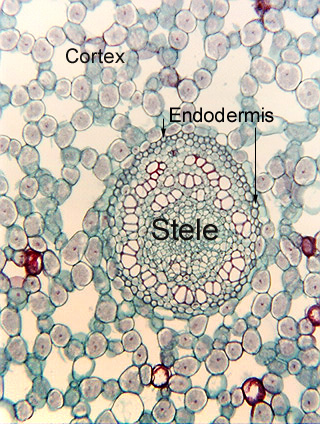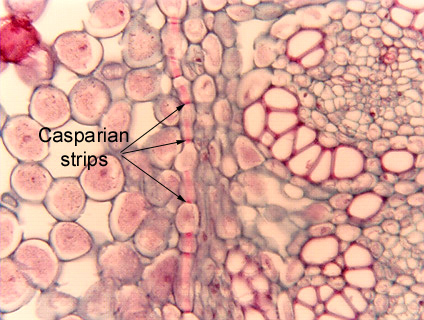

Fig. 11.3-5. Transverse sections of inner cortex of sweetflag (Acorus). The stele (the vascular tissues) of sweetflag are suspended in the aerenchymatous cortex. It is usually necessary for a plant to have a compact boundary that seals off open tissues like this; the boundary gives the plant a means by which it can control the movement of material into and out of the cortex. The outer surface is controlled by the epidermis, and here in this species, the inner surface of the cortex is controlled by an endodermis with Casparian strips (see pages 151 and 209-210 in Plant Anatomy (Mauseth) or pages 182-184 in Botany (Mauseth). We often think of an endodermis and Casparian strips as features of roots, but they often also occur in root-like stems – for example in rhizomes that grow horizontally right at the soil surface or slightly below ground.